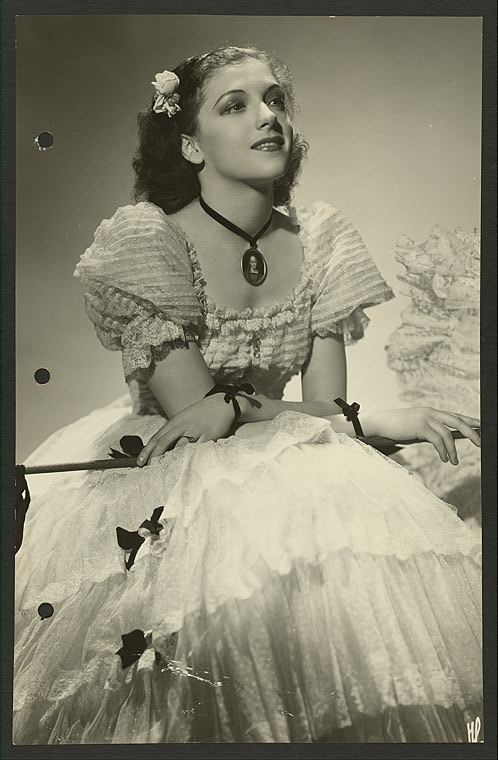What’s the connection between George Balanchine and The Easter Bunny?
We didn't know either so we were intrigued to learn that George Balanchine, the renowned ballet choreographer and founder of the New York City Ballet, was known to host lavish Easter parties at his West Sixty-Seventh Street apartment in New York City.
The Easter Sunday suppers were legendary. With the table decorated in white with lilies, candles, and linens, the stage was set to star traditional Slavic Easter treats such as Pashka and Kulich – a cheesecake and a panettone like bread. Even at the height of his fame Balanchine would spend days in the kitchen preparing a traditional Russian Orthodox feast for guests. The same choreographic innovator who envisioned the long, lean ballet body immediately recognizable as the “Balanchine ballerina” relished serving up Pashka made, according to his recipe, with ten pounds of tvorog (white cheese), two pounds of butter, ten cups of sugar, and two dozen egg yolks.

His inner circle of friends was made up of Russian émigré artists and intellectuals, company members, and prominent New York physicians. Invitations were coveted and rarely, if ever, refused. Former New York City Ballet principle dancer Edward Villella recalled yearning, in vain, for an invitation. In 1980 the then-director of American Ballet Theatre, Mikhail Baryshnikov, even attended the Easter fête after his departure from Balanchine’s company.
The parties were known for their elaborate decorations and Easter-themed festivities, such as egg hunts and Easter bunny costumes. Balanchine himself often dressed up as the Easter bunny, delighting guests both young and old.

Whilst Balanchine's Easter parties were a beloved annual event in the New York City arts scene, and continue to be remembered; his love of good food, fine wines and lavish entertaining were lifelong passions beyond Easter time.
Onstage, Balanchine transported America to a world of movement and music that showcased the gems of the Russian Imperial Ballet tradition alongside the neoclassical abstraction of his Black and White ballets. Offstage, Balanchine introduced the complex palate of Russian cuisine and the religious beauty of Orthodox customs into the lives of his American public.
Hunger defined Balanchine’s experiences during World War I and the Russian revolution. Balanchine’s recollections of The Imperial Theatre School vacillated between culinary pleasures—“the borscht was a work of genius”—and spartan punishment; the penalty for a poorly executed lesson entailed dinner without dessert. His second partner and schoolmate, Alexandra Danilova, suggested that the same deprivation that forced the boy Balanchine to steal from Red Army barges started the adult choreographer’s love of luxury and gourmet excess.
As a host and as a husband, Balanchine was indefatigable. During his stint with the Ballets Russes in interwar Europe, Danilova recounted moveable feasts ranging from early days in Paris, where Balanchine sold his suit to procure a proper spread, to glamorous soirées in Monte Carlo, where Balanchine hosted dinners for the impresario Sergei Diaghilev.
Balanchine met his second wife, the German dancer and actress Vera Zorina, at a Russian Easter celebration in New York in 1936. Balanchine courted her with five-pound caviar tins and vodka, and, on tour in 1939, prepared an entire Easter banquet in the kitchenette of their Chicago hotel. Zorina wrote in her memoirs “I was as awed by his culinary talents (working in so cramped a space) as I was by his ability to choreograph under trying circumstances.”

Balanchine’s third wife, the American dancer Maria Tallchief, recalled Balanchine’s equal passions for cooking and for composer Igor Stravinsky, with whom the couple often shared elaborate Christmas dinners.
Following Stravinsky’s death in 1971, Balanchine honoured their career-spanning collaboration in a festival held during the week of the composer’s birth. On closing night, forty crates of vodka were distributed free of charge, and Balanchine gave a toast in which he reassured the audience that Stravinsky was not gone, but happily flying around the theatre.

Balanchine’s fourth wife, the French ballerina Tanaquil Le Clercq contracted Polio on the 1956 European tour after which she turned her creative outlet to cooking. Just as he molded the bodies of his muses, Balanchine honed the culinary skills of Le Clercq, whose iconic book, The Ballet Cook, preserved the foody anecdotes and recipes not only of Balanchine but also of the international ballet circuit.
Balanchine entered New York’s Roosevelt Hospital in November 1982 and passed his final days in the company of friends and food. Former principal dancer Jacques d'Amboise delivered borscht from the famed Russian Tea Room. Baryshnikov procured Georgian delicacies from a Brooklyn eatery. On his seventy-ninth birthday, on January 22, Karol von Aroldingen, his last muse, cooked Balanchine’s beef kotletki with mushrooms and cream.
Balanchine died on April 30, just nine days before Russian Orthodox Easter. His requiem service was attended by over 1,000 mourners.
To the cherished members of his company, Balanchine bequeathed the royalties to the classical ballets, which remain on the menu of the international repertory today. As Balanchine liked to say
“My ballet is like [a] great restaurant. I must prepare new, absolutely excellent food for our guests. Everybody is waiting.”
Thanks to Natalie Rouland for source material
Vera Zorina - Billy Rose Theatre Division, The New York Public Library. Vera Zorina Retrieved from https://digitalcollections.nypl.org/items/510d47df-6f94-a3d9-e040-e00a18064a99